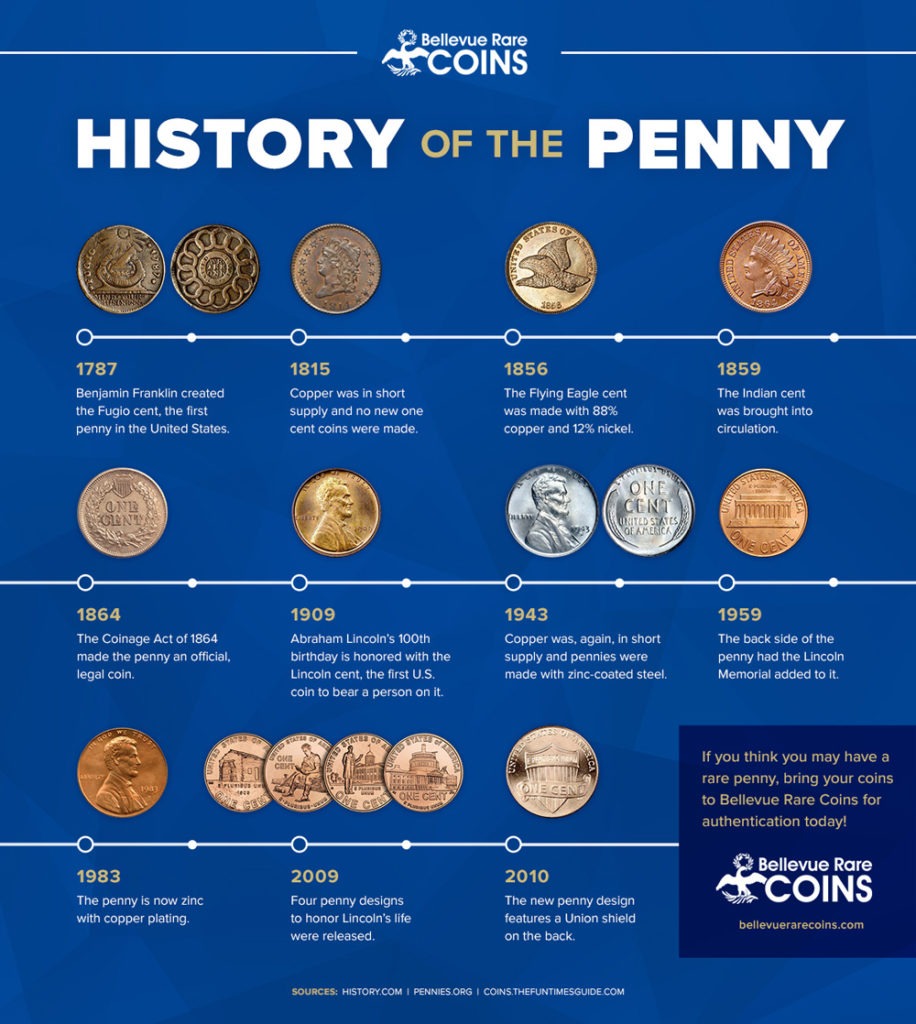
On the 1944-penny’s reverse side, you’ll find two inscriptions: “The United States of America” and “One Cent.” There are two wheat stalks situated on the right and left outer edge of this coin’s tail. To the left of the image is an inscription that reads “LIBERTY.”Īrching overtop the 1944 Wheat penny is another inscription reading “IN GOD WE TRUST.” The year “1944” is engraved to the right of the portrait. The head of the 1944 Penny comes with an Abraham Lincoln profile. Head and Tail Features of the 1944 Lincoln Penny PortraitĪn Abraham Lincoln portrait dominates the obverse of the 1944 Wheat penny. The following are the features your penny must-have.
#OLD PENNIES VALUE CHART PLUS#
This coin would not rust as fast as the 1943 penny, plus Americans could quickly identify it.īefore you determine the value of your 1944 penny, first confirm that what you have is indeed a 1944 Lincoln cent. The government responded to these outcries by minting the 1944 Wheat penny and deliberately using copper. There was also another lot that couldn’t distinguish this coin from a dime. However, most people complained that the 1943 penny corroded too fast and was not an ideal currency. The government did not use copper because it wanted to save it for making ammunition for the war. A year before the production of this coin began, people used the 1943 Lincoln penny, which came with a zinc-coated steel composition. The 1944 Penny was minted during World War II. Many others did not exceed the 1 billion mark.

It’s worth noting that the 1944 wheat penny was one of the most minted coins in US history. The Denver mint struck 430,578,000 units with the mint mark “D.” At the San Francisco mint, 282,760,000 1944 pennies were made, and these came with the “S” mintmark. The Philadelphia mint produced 1,435,400,000 pieces without a mintmark. The Philadelphia, San Francisco, and Denver Mints in the US minted over 2.1 billion 1944 pennies. Unlike the previous wheat coins with copper, zinc, and tin, this cent came with copper and zinc only.ġ944 “D”, “S” & “No Mint Mark” Wheat Penny It marked the comeback of Lincoln pennies with copper material. It was manufactured from recycled ammunition shell metal. The 1944 Penny is one of the cents Victor David Brenner designed. This article discusses every crucial detail worth knowing about the 1944 Wheat penny. These inscriptions also affect how they are priced. There’s a variety of them, depending on the mint marks they bear. In 2018, bidders were ready to part with up to $24,000 for a rare 1944-D/S Lincoln cent.ġ944 wheat pennies are old coins minted in the United States decades ago. Its value ranges from 20 cents to 50 cents, but it could be worth way more than that, depending on its qualities.įor instance, a 1944 wheat penny in certified mint state (MS+) condition can fetch between $6 and $8 at an auction. The 1944 Wheat penny is a copper coin with no silver or tin content. Most collectors are ready to choose it over several other coins minted between 19 because of its numismatic value and attractive design. pennies, based on over 250,000 public records and auction sales figures.The 1944 Lincoln wheat penny is among the most common wheat pennies today.

Read on to find out what makes these 16 coins the most valuable U.S. Since pennies hold a special place in almost every coin collector's heart, demand for high-quality coins can drive the value through the roof.

As a collector, you eventually reach the point where you need to purchase your coins from a coin dealer or at auction to achieve the quality you want. Most of them pulled the coins out of circulation. Almost every collector of United States coins began collecting the Lincoln penny. And some coins are made more valuable simply by being unintentional, as with the 1943 Lincoln pennies that were mistakenly made with bronze rather than steel.įinally, demand is the factor that drives value the most. Condition is another coins that stayed out of circulation may retain their original coloring and fine details, significantly adding to their value. But, of course, rarity is a significant factor in determining a penny's worth. For the world's rarest and most coveted pennies, values are well over $100,000 and approaching $2 million. Some little pieces of copper can be worth some huge dollar amounts.


 0 kommentar(er)
0 kommentar(er)
